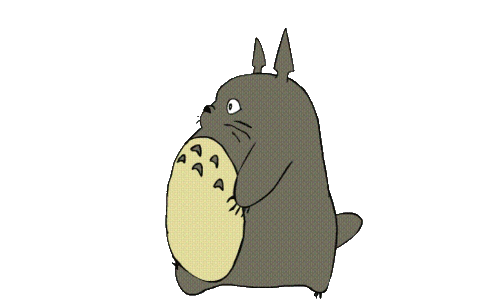Traditional Dance

Renjishi 連獅子
The theme of "Renjishi" stays close to that of the Nô play "Shakkyô", and it is classified as a matsubame dance. That is, a dance that's performed before the symbolic backdrop of a large pine tree flanked by bamboo which is copied from the Nô stage. This scenery has no connection with the dance's content.
The first section features a pair of Kyôgen actors who come to dance the story of the shishi parent and cub. The actors each carry a wooden mask of a shishi head, one with white hair representing the parent shishi and the other with red hair to represent its child. A shishi is a mythological lion-like animal said to be the king of beasts and always associated with the Buddhist deity Monju. For this reason, any portrayal of the shishi should not only bring out its wild, beastial nature, but also a sense of dignity and authority that goes with this divine status. The shishi is in many ways a spiritual creature.

Fuji Musume 藤娘
Fuji Musume originated as one part of a “Gohenge Buyo” (a dance comprising 5 sets of quick costume changes) known as “Kaesu Gaesu Onagori Otsue,” in which the characters of “otsue” (Genroku period folk paintings) come alive. In the early Showa period, Onoe Kikugoro VI, whose specialty was Buyo, developed a new dramatisation of a wisteria nymph slipping out of her painting and dancing. This interpretation has been popularly adopted since then.
Fuji Musume is a famous Kabuki dance revolving around the tale of the unrequited love of the Wisteria Maiden. The story is set in Otsu, a city famous for its paintings and art-lined streets among which was the painting of the Wisteria Maiden. Yearning for the man she loves, the maiden came to life and stepped out of the painting. However, her love was not answered. Eventually, the heartbroken maiden returns to her painting in sadness and despair.
This is one of the most renowned dances in Buyo to which many Buyo learners and performers aspire. The image of the young wisteria maiden adorned with a red-threaded headpiece and carrying a wisteria branch over her shoulder has become an icon of Japanese dance, and the theme of impossible love, coupled with elaborate and beautiful stage setting and costume, make Fuji Musume a widely appreciated piece.

Sakura Sakura さくらさくら
Based on the famous folk song Sakura Sakura, the dance describes the beauty of the blooming blossoms and the fluttering of the petals in the wind. Sakura is a symbol of great beauty and purity, yet it is also a reminder of the ephemeral nature of life as it blooms and withers away quickly in the gentle breeze of spring.
Follow the maidens onstage as they express their admiration for the sakura they chance upon at the beginning of the dance. Note particularly the use of fans, which morph to symbolize falling petals and blooming flowers, among other aspects of scenery and emotion. Fans themselves are an integral part of classical Japanese dance, and they are the first prop all dancers learn to handle properly. Their use here thus lends a sense of simplicity to the dance all the better to showcase sakura with.
Folk Dance

Hanagasa Odori 花笠踊り
One of the largest festivals in the Tohoku region of Japan, Hanagasa Odori is held in Yamagata on August 5-7. Thousands of dancers holding hanagasa, which are hats made out of bamboo or rush and decorated with flowers, dance through the city while spectators cheer them on. The rhythmic pulse of the hanagasa songs keeps the dancers moving together as they march down the city streets yelling "Yassho! Makasho!" and twirling their hats to the left, right, up, and down.
The Hanagasa Festival held in Kyoto on October 9 features a procession of people holding large umbrellas decorated with flowers, but the overall effect is similar.

Awa Odori 阿波踊り
January 01, 2020
Awa Odori is part of the Obon Festival (Festival of the Dead) in the Tokushima prefecture. With their characteristic hats and kimono, dancers parade in large groups while singing and chanting the song, Awa Yoshikono. Spectators are encouraged to join in the lively festivities and dances alongside the dancers.

Zeni Daiko 銭太鼓
Zeni Daiko as a dance is so named after its essential props, the “zenidaiko”, or hollow batons made of bamboo with coins strung on the inside. The ends of the batons are decorated with tassels, and the jingling of the coins resembles the sounds of the tambourine. The Zeni Daiko dance originated with the folk, and is characterized by its vibrant festivity and the use of the “zeni daiko” in various twirling and flipping moves to accentuate the rhythm of the music. This particular version of the dance celebrates a successful harvest, thus the Zeni Daiko morph to represent hoes, shovels and various farming tools throughout the dance.

Soranbushi ソーラン節
Soranbushi is a well known folk dance with origins from the fishermen of Hokkaido. Its choreography differs from region to region. More recently, it has even been re-adapted to modern beats, hence ensuring its enduring popularity among the younger generation. These updated versions of Soranbushi are often performed at school sports days as a mass dance.
The version we present here is a throwback to its traditional origins. Lively and energetic, this dance brings out the spirit of summer.




